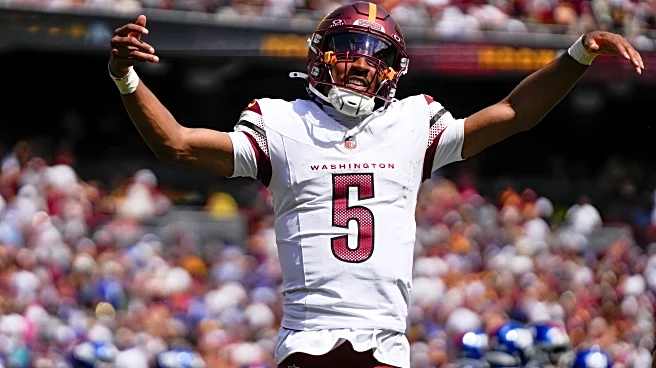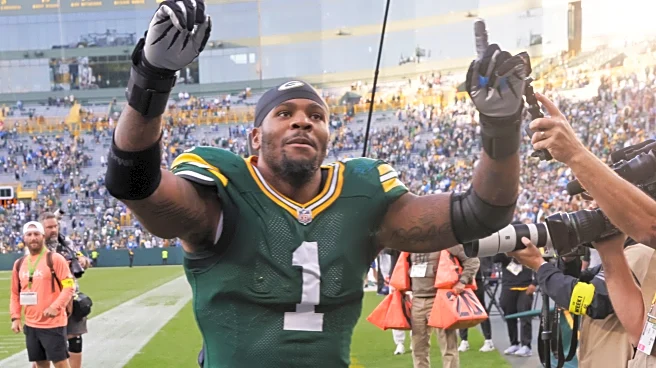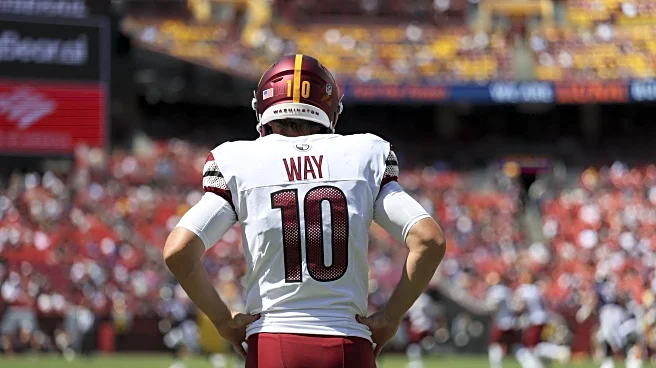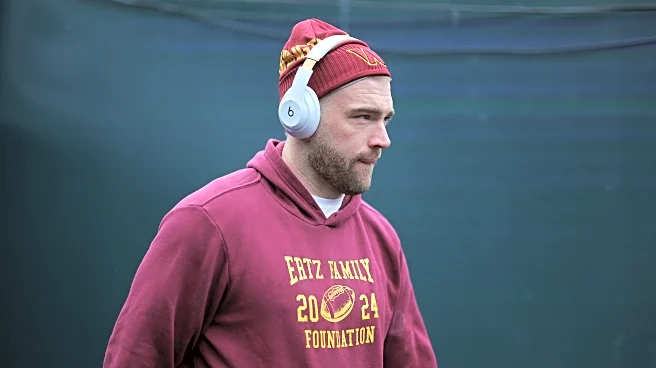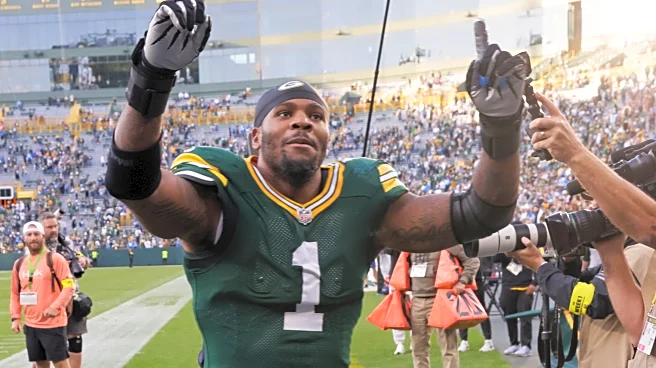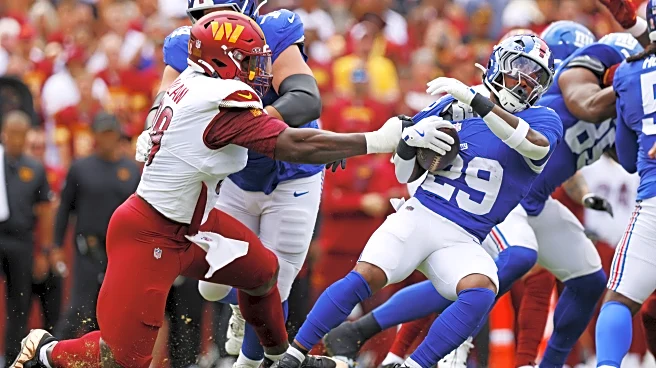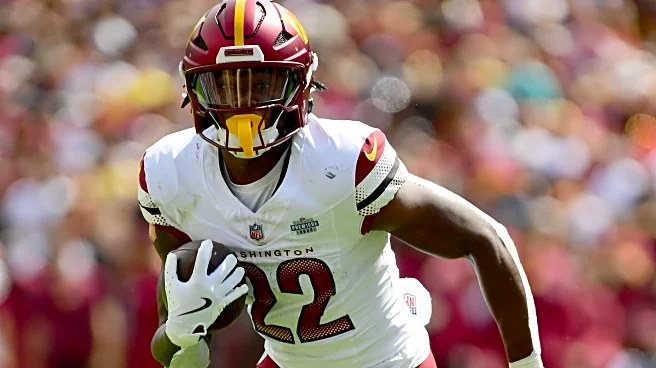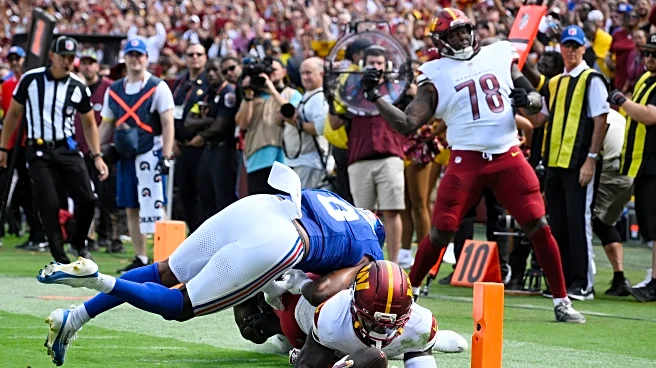

This week, the Packers are at home on Thursday Night Football to take on the Washington Commanders, one of the hottest young teams coming into 2025. But who were they in 2024, and why did they generate so much buzz?
Key additions
- RB Jacory Croskey-Merritt (7th Rd, 245th Overall)
- WR Deebo Samuel
- WR Jaylin Lane (4th Rd, 128th Overall)
- LT Laremy Tunsil
- RT Josh Conerly (1st Rd, 29th Overall)
- DL Javon Kinlaw
- DL Eddie Goldman
- EDGE Von Miller
- EDGE Deatrich Wise Jr.
- EDGE Jacob Martin
- CB Trey Amos (2nd Rd, 61st Overall)
- CB Jonathan Jones
- S Will Harris
Key Losses
- RB Brian Robinson
- WR Olamide Zaccheaus
- WR Dyami Brown
- LT Cornelius Lucas
- DL Jonathan Allen
- DL Sheldon Day
- DL Phidarian Mathis
- DL Jalyn Holmes
- EDGE Dante Fowler
- EDGE Clelin Ferrell
- CB Benjamin St-Juste
- S Jeremy Chinn
The Washington Commanders’ 2024 season represented one of the most remarkable turnarounds in franchise history, signaling the dawn of a new era under general manager Adam Peters and head coach Dan Quinn. After years of mediocrity and rebuilding efforts, Washington finally broke through
with its first winning season since 2016 and best overall campaign since 1991.
The team not only returned to the playoffs but advanced all the way to the NFC Championship Game, restoring hope and excitement for a fan base that had endured decades of frustration. Their combination of offensive efficiency, defensive resilience in key stretches, and the electrifying play of rookie quarterback Jayden Daniels made them one of the league’s most compelling stories.
The offensive resurgence was at the heart of Washington’s rise. With Kliff Kingsbury calling plays, the Commanders finished fourth in the NFL in overall offensive EPA per play, a clear reflection of both efficiency and explosiveness. The rushing attack, in particular, set the tone each week.
Washington led the league with a rushing EPA per play of +0.13 and a rushing success rate of 49.6 percent, while generating a league-high 66.7 total rushing EPA. Their ability to consistently win on the ground opened opportunities through the air and allowed them to finish second in the league in percentage of drives ending in points. This balance made the offense one of the most efficient and sustainable units in football.
Daniels’ rookie year was exceptional: he completed almost 70% of his passes for 3,568 yards, 25 touchdowns, and 9 interceptions, earning a 100.1 passer rating. He also proved to be a dynamic runner, adding 891 yards and 6 touchdowns on the ground.
Beyond the statistics, Daniels’ composure was outstanding; he posted a 104.6 rating against the blitz and orchestrated five 4th-quarter comebacks (four in the regular season, one in the playoffs), consistently performing under pressure.
The play below epitomizes his rookie season as a passer. Two minutes remained, the game was tied, and Jayden Daniels lined up in the shotgun. Washington came out in a three-by-one set. On the trips side, the concept featured a vertical, an out, and a sit route—a classic three-man combination. On the backside, the single receiver, Noah Brown, ran a dig. Pre-snap, the safeties’ alignment was unclear, leaving open the possibility of either two-high or single-high coverage.
At the snap, linebacker Micah McFadden came on a blitz while boundary safety Tyler Nubin rotated down behind him. Running back Austin Ekeler stepped up with excellent blitz pickup, giving Daniels the pocket he needed.
Daniels’ eyes first went to the trips side, but the picture was muddy. the defense had four over three with a safety capping the vertical and corner playing the midpoint between the sail route and the out, effectively taking away both options.
Staying within the timing and structure of the concept, Daniels progressed backside to Brown on the dig. The throw required anticipation and precision, threading it past Nubin, who had rotated down into the passing lane.
It was a full-field progression read, executed in rhythm, in a critical two-minute situation—and for Daniels, only his second NFL start. The poise and processing he displayed on that play underscored why Washington believed he could be their long-term answer at quarterback.
Daniels also thrived as a runner, rushing for 891 yards on 6.0 yards per carry with six touchdowns, breaking Robert Griffin III’s rookie rushing record for a quarterback. By season’s end, Daniels was named Offensive Rookie of the Year and earned a Pro Bowl selection, cementing his place as the cornerstone of Washington’s future.
What separated Daniels from other rookies was not just his production but his efficiency. Through the first four weeks of the season, he led the NFL in total passing EPA at +50.7 and averaged 0.32 EPA per dropback, the best mark for any rookie quarterback since 2000. His accuracy was historically elite, completing 82.1 percent of his passes during that early stretch—the best four-game start to a career since at least 1950.
Daniels was also lethal on intermediate throws, completing 18 of 21 passes between 10 and 19 yards for 294 yards and a +29 passing EPA, ranking second in the league. His blend of precision, poise, and athleticism gave Washington a true dual-threat weapon.
The season was also defined by unforgettable moments that showcased Daniels’ poise under pressure. His “Hail Maryland” game-winning heave against the Chicago Bears quickly became an iconic highlight, a throw that instantly resonated with fans as symbolic of a new chapter for the franchise.
Later in the season, his Week 16 explosion against the Philadelphia Eagles, where he threw five touchdown passes, was the first such performance by a Washington quarterback since 1991. These moments underscored not only Daniels’ immense talent but also his ability to rise in critical situations, a trait that lifted the Commanders into legitimate contender status.
The team’s diverse rushing attack was another key to their success, ranking 4th in the NFL in yards per attempt and 3rd in yards per game, 4th in EPA/play, 5th in passing success rate, and 3rd in rushing success rate.
Washington’s postseason run cemented the notion that they had become one of the NFC’s rising powers. In the Wild Card Round, they earned a gritty 23–20 road win over the Tampa Bay Buccaneers, showing resilience in a tight game. The following week, they pulled off one of the biggest surprises of the playoffs by upsetting the top-seeded Detroit Lions 45–31 in the Divisional Round, riding Daniels’ hot hand and the run game’s efficiency
Though their magical run ended with a lopsided 55–23 loss to the Eagles in the NFC Championship Game, the Commanders had already proven themselves capable of competing at the highest level.
Defensively, the Commanders lagged behind their offensive success, and the disparity was stark in the numbers. Washington ranked 29th in defensive EPA per play and 30th in first downs allowed, making it clear that this side of the ball often put the offense in difficult positions.
Against the pass, the defense held its ground reasonably well, ranking third in passing yards allowed per game, tied for 11th in sacks, 13th in opponent success rate, and 22nd in passing EPA allowed per play. The secondary and pass rush showed flashes, but inconsistency kept them from being elite.
Where the defense truly faltered was against the run. Washington allowed 137.5 rushing yards per game, ranking 30th in the league, and gave up 4.8 yards per carry, 28th overall. They were also 27th in EPA allowed per rushing play, making them one of the most vulnerable run defenses in football.
Opposing offenses often found success attacking Washington on the ground, and this weakness became an ongoing theme throughout the season. While the offense could mask some of these struggles, the inability to stop the run loomed large against top competition.
Recognizing these shortcomings, the front office made bolstering the defensive front a top offseason priority. The Commanders added size and depth by signing linemen like Javon Kinlaw, Eddie Goldman, and Deatrich Wise Jr., while also re-signing Carl Davis.
Alongside established star Daron Payne, these additions were designed to shore up the interior run defense and provide more versatility to Quinn’s scheme. The investment reflected an understanding that sustaining success would require pairing their elite offense with a more balanced and reliable defense.
Ultimately, the 2024 Washington Commanders embodied both promise and unfinished business. The offense, fueled by Daniels’ historic rookie campaign and the league’s most efficient rushing attack, positioned the team as a legitimate contender. The defense, however, remained a glaring weakness, particularly against the run, and was the primary factor preventing Washington from reaching the Super Bowl.
Even so, the season marked a turning point for a franchise long stuck in neutral, and with their young quarterback leading the way, the Commanders now look poised to build on their resurgence and contend for years to come.


